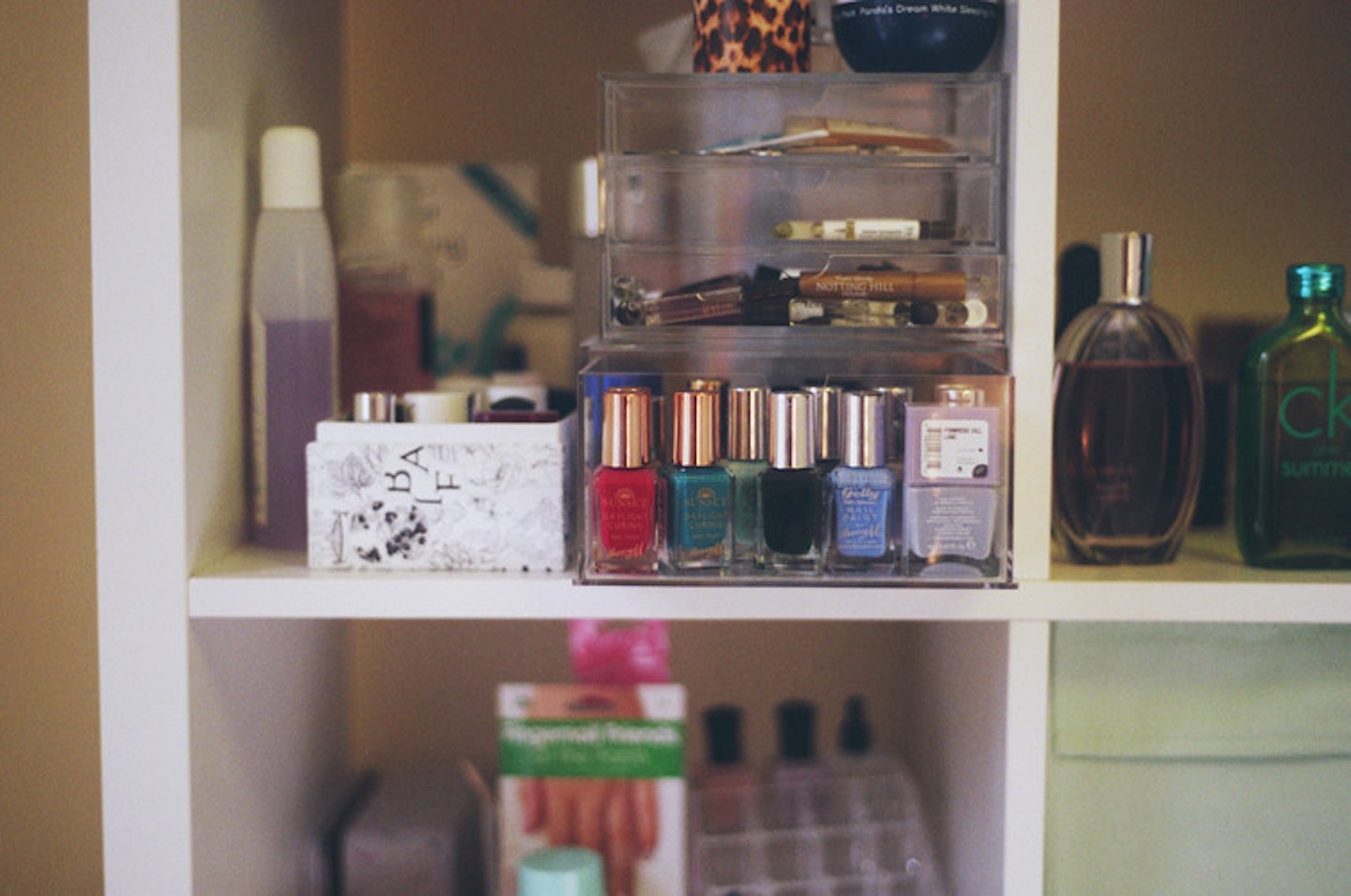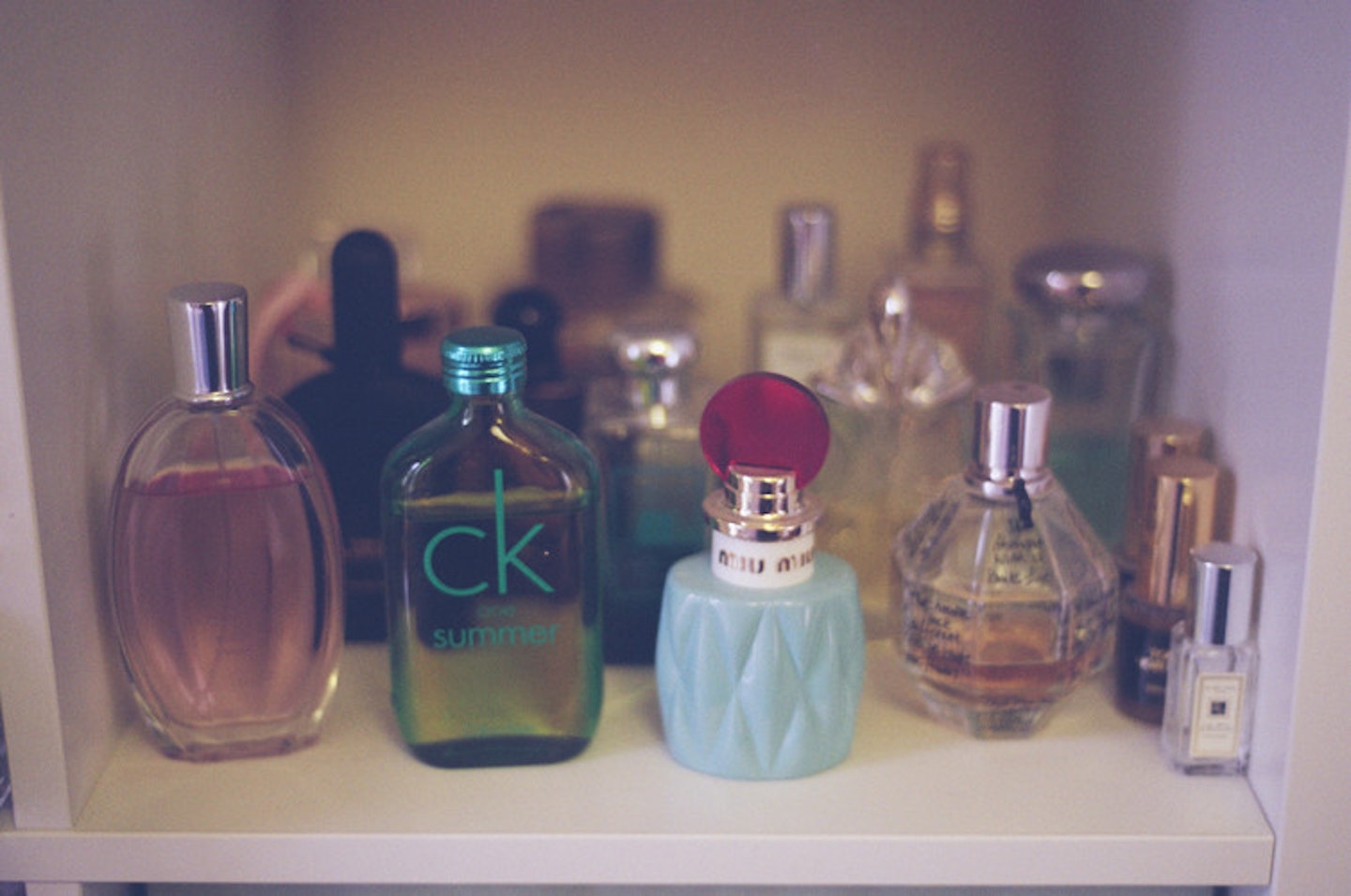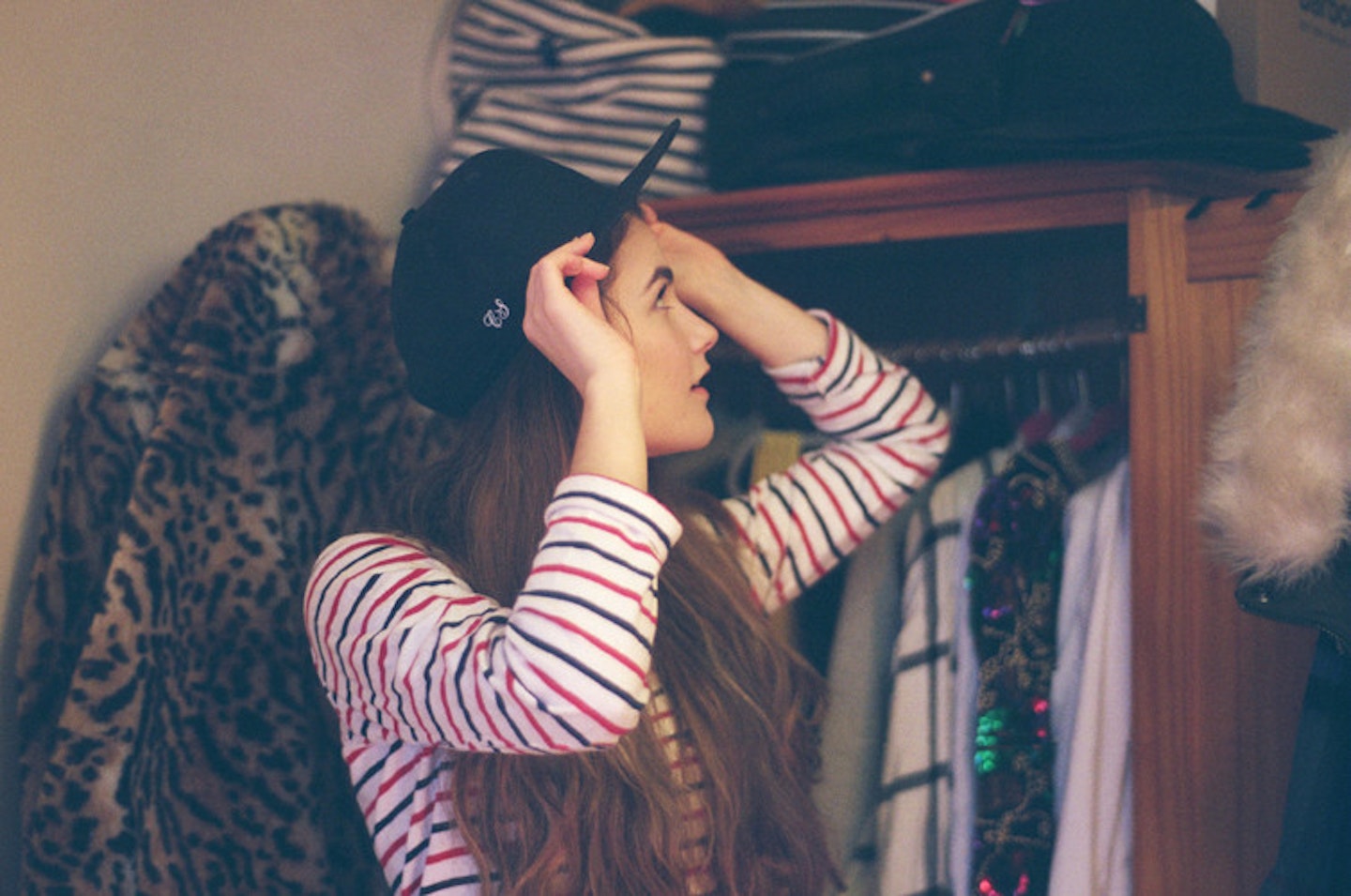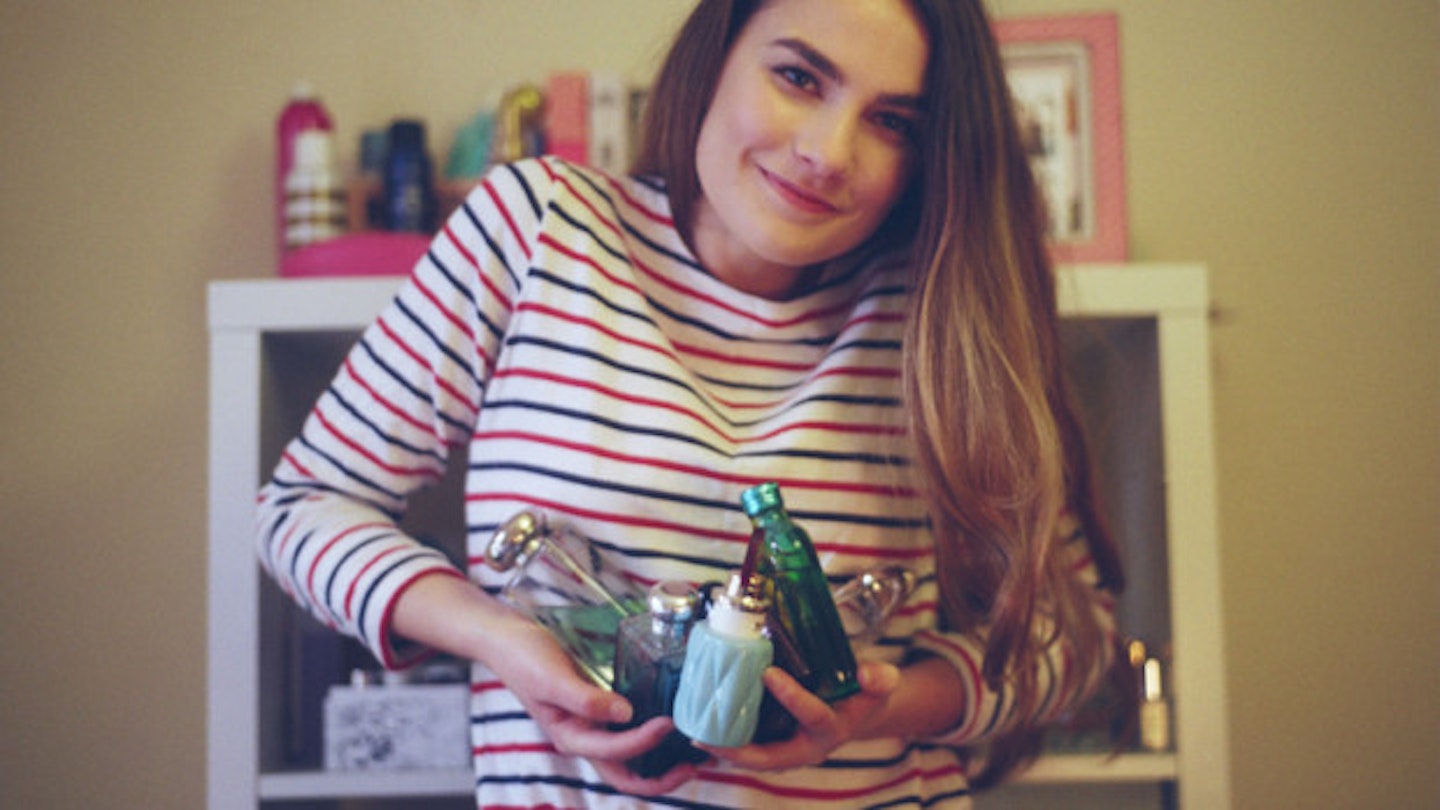I am not a hoarder – not in the real, true, full-on sense – I just have a lot of stuff. Maybe that's what hoarders say and I'm in denial, but as long as I don't have stacks of 20-year-old newspapers and magazines (they're a year old, at most) I feel comfortable simply calling myself 'messy' or into 'stuff' or a little 'over-zealous' with belongings.
Marie Kondo is the opposite. Marie Kondo is the real life, human embodiment of the slick interiors you see on Pinterest. Marie Kondo is someone I never will be. But her a book, The Life-Changing Magic Of Tidying, which has sold over three million copies, is a way to channel some of Marie's ethos.
It's based, as the title suggests, on how tidying can have a dramatic effect on your life. She claims that it will change your life, that you'll feel motivated in ways you've never known, you'll achieve everything you've always wanted to and this means you'll never look back. These are big claims. And they're claims that absolutely make you want to read it because, for one reason or another, we're all looking for the moment in which our lives fall in to place and we can relax, chill and get on with it because we've finally 'made it' or something. And apparently doing a huge tidy is that moment.

Before you do anything, Marie asks you why you want to tidy up; what you hope to gain from it. Unfortunately the answer she's looking for here is not, ‘I want my room to stop looking like a shit-tip’. No. This is far too vague. Marie wants cold, hard, detailed dreams.
This means I struggle from the page one. I can't decide what I want for dinner. I still haven't chosen my (2015) Christmas present. This is quite pathetic, I know, but being asked to describe your ideal life is overwhelming, not to mention bloody depressing, just like playing the ‘What Would You Buy If You Won The Lottery’ game. But I get it: visualising your target will help the process because, according to the KonMarie method, tidying will lead you there.

The core principle of the KonMarie technique is asking yourself whether something 'sparks joy' in you. ‘The best way to choose what to keep and what to throw away is to take each item in one’s hand and ask: “Does this spark joy?” If it does, keep it. If not, throw it,’ she explains to the reader. Physically touching the object is key, she says, because your body will react differently to different items.
Again, I immediately feel too indecisive for this approach. What even is joy? My mirror doesn't bring me joy – in the morning it's quite the opposite – but I need it. My duvet? Basically a bag of feathers and there is zero joy in that, although it *does *keep me warm and cosy. And I like being warm and cosy. What I'm trying to say is: the principle of surrounding yourself with things you love is all well and good, but holy shit, it's difficult to distinguish.

Marie likes things to have a purpose. She speaks a lot about items fulfilling a 'role' in a person's life. When I try to throw things away one of my main thoughts is: w_hat if I need it later?_ I hate the idea of coming to a moment in my life where I want something that I threw away at an earlier date.
But I also understand that I can’t live the rest of my life keeping hold of a plastic Hawaiian lei just in case I go to a fancy dress party that requires one.
‘Every object has a different role to play. Not all clothes have come to you to be worn threadbare. It is the same with people,’ Marie tells us. This is a relaxing notion – just as we don’t become best friends with every single people we meet, possessions don’t have to be kept and treasured for ever, either. I wanted that Hawaiian lei at one point (Malia ’09, sue me) but it’s served it’s purpose (intense humiliation) and now it’s time for it to go.
That said, it's an entirely different story when it comes to sentimental objects. I'm quite a sentimental person, I think most people are, and Marie recognises that they’re the most difficult things to get rid of (she encourages the person to approach this category last) but I don’t think she quite gets it.
It’s her view that, ‘truly precious memories will never vanish even if you discard the objects associated with them’. I disagree. My memory is rubbish so finding a picture that I'd forgotten about sparks a lot of joy. For me, these things aren’t one use; I enjoyed that picture the first time I saw it. And the second time. It is important to live in the moment, but sometimes looking back can make you appreciate the present more, or in a different way. Granted, a boring birthday card from your neighbour probably doesn’t qualify, but a note from your first love? Pretty poignant.

I have a lot of loungewear: pajamas, onesies, hoodies, tracksuit bottoms… Too many, you might say. I say, not enough. I literally cannot fathom a person who gets home and Stays. In. Their. Day. Clothes. Much to my dismay (but not my surprise) Marie’s not into loungewear.
She is critical of people who keeping clothes that don’t bring them joy to wear around the house. Fair enough. But then… THEN she has a go at actual loungewear: ‘if sweat pants are your everyday attire, you’ll end up looking like you belong in them, which is not very attractive.’ Wow.
That’s not all of it: ’If you are a woman, wear something feminine or elegant as nightwear. The worst thing you can do is to wear a sloppy sweat suit.’ Both very judgemental and stereotypical statements. This is the moment in which my relationship with KonMarie went downhill, for obvious reasons.
The thing is, my trackies and non-elegant nightwear, do bring me joy because they symbolise a some things that I love. Namely, being comfortable, lying down and doing nothing. So explain that please, Marie?

My chest of drawers resemble some kind of textile moshpit. Piles of clothes vying to be worn, when actually, I only really wear about eight of the tops on the reg, because I can’t even see the rest. I know this is a problem. Marie believes folding trumps hanging, every time: you can fit 20-40 items in the same space that 10 items will be able to hang, she tells us.
Those are convincing stats and given that my wardrobe rail is positively groaning from the weight (see pictorial evidence above) I’ll take this on board. The key is to store clothings standing up, not laid flat on top of one another. This is a revelation because you can see everything you have. She has different techniques for folding t-shirts, trousers, and long sleeved tops. There’s even one for underwear.
And whilst we're on underwear, Marie is pissed off at how people look after their socks and hoisery. ‘They take a brutal beating in their daily work, trapped between your foot and your show, enduring pressure and friction to protect your precious feet.’ It’s for this reason, she says, that you should never ball them up or tie them in knots. ‘What treatment could be worse than this?’ she asks.
Stop it, Marie. Stop it, now. I spend a lot of my time worrying – about whether my friends secretly hate me, deadlines, whether I have any eggs in – don’t make me worry about the stress I’m putting on my socks, too.
A few of her concepts felt like this: over the top, impractical and actually pretty ridiculous. For example, everyday after work she empties her handbag, thanks each items for their work that day, puts them back in their ‘place’ (everything has a ‘place’) and packs her handbag away. There is 100% chance I won't be doing this. Ever.

Marie's primary sentiment, the main thing I’ve taken away from this, is that we don’t need all the stuff we have. It makes sense to surround ourselves we things we love, that make us smile everytime we see them and the decaying pile of receipts you have in your drawer, doesn't. But in the same breath, objects don't always have to enter your life to serve a purpose before leaving again; some things bring repeated joy.
I like a home to feel like a home. I don’t want an empty room or house (flat). The KonMari method has inspired to think more carefully about the things I own, whether they’re needed, and whether I love them, but I’m not going to start thanking objects when I get home from work. Undoutedly her method works – read the testimonials and reviews – but it takes commitment to implement her method on the scale it requires. And quite frankly, I don’t think I want to.
Like this? You might also be interested in:
7 Places To Buy Cheap Homeware Online To Make Your Bedroom Brilliant
Follow Chemmie on Twitter @chemsquier
This article originally appeared on The Debrief.
